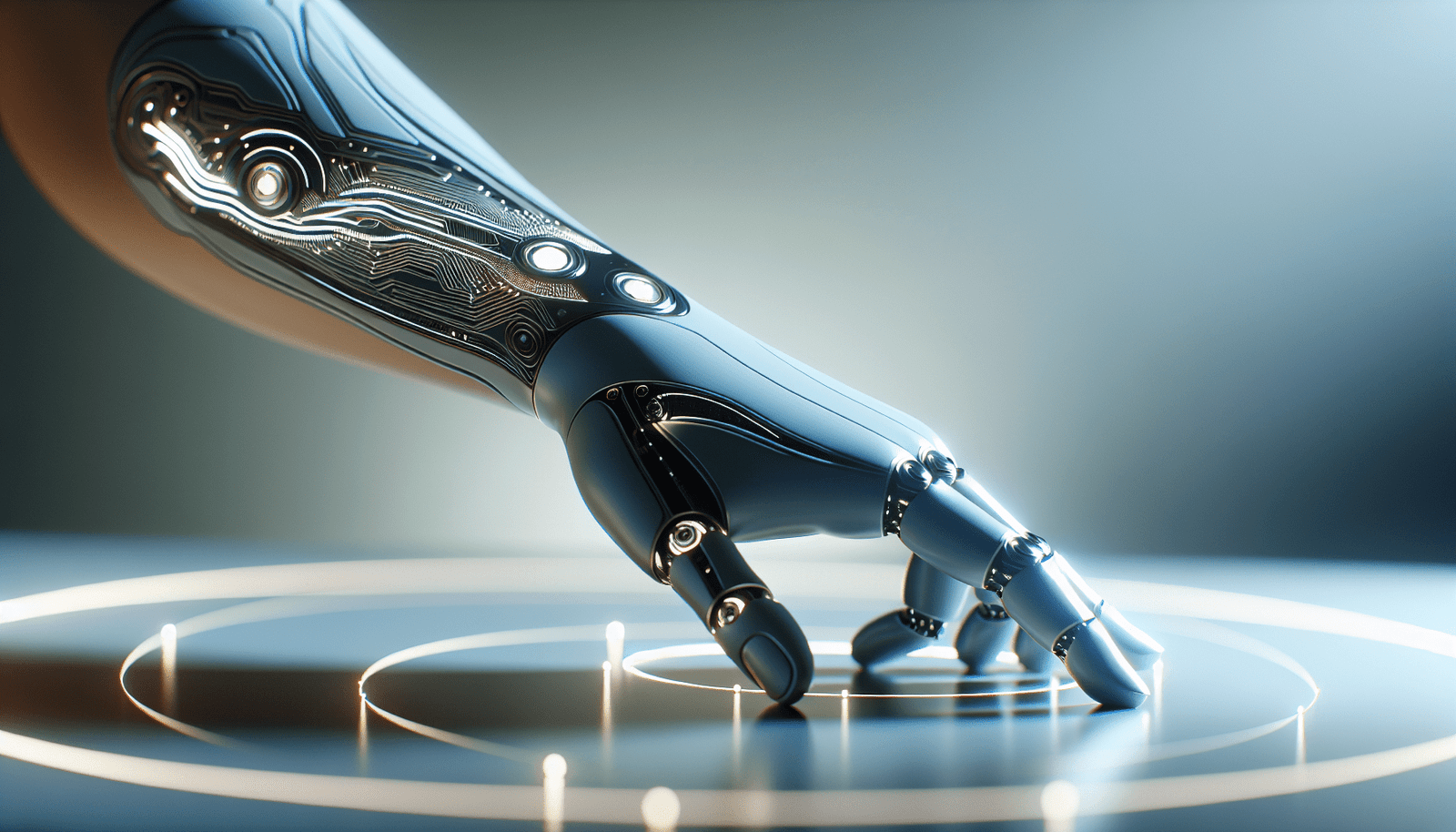What does the future hold for human augmentation? As technology continues to advance at an astonishing rate, the idea of enhancing the capabilities of our bodies and minds isn’t just a concept found in science fiction anymore. It’s becoming a tangible reality that’s reshaping how I think about what it means to be human.
What is Human Augmentation?
Human augmentation refers to the improvement of human abilities through technology. This can include physical enhancements, cognitive enhancements, or even social improvements. I find it fascinating how these advancements can bridge the gap between disability and capability, opening up new possibilities for everyone.
Types of Human Augmentation
Understanding the various forms human augmentation can take is essential to appreciate its potential impact on our lives. I’ve categorized them into three primary forms: physical, cognitive, and emotional/social.
Physical Augmentation
Physical augmentation involves enhancing the body’s capabilities beyond the natural norm. This could be through prosthetics, exoskeletons, or even genetic modifications. My mind races at the thought of robots that work seamlessly alongside us, providing extra strength, endurance, or speed.
| Type | Description | Example |
|---|---|---|
| Prosthetics | Devices that replace missing body parts | Bionic limbs |
| Exoskeletons | Wearable machines that improve strength and mobility | Military or industrial use |
| Genetic Modifications | Altering DNA to enhance physical traits | CRISPR gene editing |
Cognitive Augmentation
Cognitive augmentation encompasses technologies that enhance mental capabilities. This could involve brain-computer interfaces, nootropics (substances that enhance cognitive function), or virtual reality environments that stimulate the brain. I can’t help but imagine the endless possibilities when our brains can articulate data at lightning speed or learn new languages almost effortlessly.
| Type | Description | Example |
|---|---|---|
| Brain-Computer Interfaces | Direct communication between brain and computer | Neuralink technology |
| Nootropics | Supplements or drugs that improve cognitive functions | Modafinil, racetams |
| Virtual Reality | Immersive experiences for cognitive training | VR learning environments |
Emotional/Social Augmentation
Emotional or social augmentation enhances interpersonal relationships and emotional intelligence. This could involve AI companions or software that helps improve empathy and communication skills. I’ve always felt that understanding emotions is as crucial as intelligence, and these advancements could foster better connections among individuals.
| Type | Description | Example |
|---|---|---|
| AI Companions | Intelligent systems that understand and respond to emotions | Social robots |
| Communication Aids | Tools designed to improve conversation skills | Interactive learning apps |
| Empathy Training | Programs that help increase understanding of emotions | Emotional awareness workshops |
The Ethics of Human Augmentation
As I contemplate the various possibilities of human augmentation, I can’t ignore the ethical implications that arise. The integration of technology into our physical and mental selves raises several questions worth considering.
Equity and Access
One of the significant ethical issues is the potential for inequality. If augmentation technologies are available only to a privileged few, it could lead to a society divided by ability. Embracing equity in access to these advancements is essential for a balanced future.
Consent and Autonomy
When enhancing oneself through technology, consent and autonomy become paramount. I often ponder whether it’s ethical to modify someone’s brain or body without their explicit consent. This question becomes even murkier when considering enhancements for children, who may not fully understand the implications.
Identity and Humanity
As I think about the extent of augmentation, I ask myself: how much technology can I incorporate into my life before I cease to be ‘me’? This leads to questions about our identity and humanity. If I were to enhance my cognitive capabilities significantly, would I still be the same person?
Current Trends in Human Augmentation
As technology evolves rapidly, I find it intriguing to observe current trends in human augmentation. These trends not only reflect advancements but also society’s reception to them.
Wearable Technology
Wearable devices like smartwatches and fitness trackers have become increasingly popular. They provide instant feedback about my health and daily activities. It’s motivating to watch my progress and push my limits. As I see it, wearables are just the tip of the iceberg in a broader trend towards body enhancement.
Neurotechnology
Neurotechnology is at the forefront, with companies developing brain-computer interfaces to improve cognitive functions. I can’t help but think of the immense potential when I can control devices using my thoughts alone. Imagine playing video games or operating machinery just by concentrating.
Bioprinting and Prosthetics
Advancements in 3D bioprinting are making it possible to create custom prosthetics tailored to individual needs. It’s heartening to see how technology is providing hope to those who have lost limbs. The idea of having prosthetics that not only look natural but function almost seamlessly with the body is incredibly exciting.
Artificial Intelligence
AI plays a crucial role in augmenting human abilities, especially in the workplace. I find it remarkable how AI systems can analyze vast amounts of data, allowing me to make better decisions in less time. With the right training and collaboration, AI could augment my cognitive abilities while enhancing productivity.
Future Possibilities of Human Augmentation
When I think about the future of human augmentation, the possibilities are endless and exhilarating. It leads to intriguing questions about where we, as a society, are headed.
Enhanced Education
Imagine an educational landscape where students can interface directly with information sources and teachers. With cognitive augmentation, learning could happen at an unprecedented pace. This makes me wonder how this would change the fabric of society by creating a more educated populace.
Healthcare Revolution
Human augmentation could lead to significant changes in healthcare. Wearables and implants could continuously monitor health, alerting me to potential issues before they become serious. Think about the potential for eradicating chronic diseases and extending life expectancy through enhanced biology!
Social Interaction
New technologies might transform how I experience social interactions. As AI companions become more prevalent and sophisticated, I might find engaging with them as fulfilling as interactions with real people. This opens up a host of questions about what companionship and friendship might look like in the future.
Employment Landscape
The job market will likely see a significant shift as human augmentation becomes more commonplace. I can envision jobs that require enhanced abilities or even roles that didn’t exist before, resulting from augmented capabilities. This raises important questions about retraining and adapting to a workforce increasingly dependent on enhanced individuals.
The Definition of Humanity
Ultimately, I reflect on how all of these changes might redefine what it means to be human. As we integrate more technology into our lives, I can’t help but wonder how it will change our understanding of identity, emotional connections, and even our roles in society.
Overcoming Obstacles in Human Augmentation
As with any transformative movement, human augmentation is not without its challenges. I want to look at some obstacles we need to overcome as we navigate this exciting frontier.
Public Perception
The way society views human augmentation will shape how these technologies are accepted. Some might embrace it as an opportunity for progress, while others may fear the consequences. Conversations need to be ongoing to address these feelings and discuss the benefits openly.
Regulatory Challenges
With advancements in human augmentation come the need for robust regulations. I often think about how easy it might be to misuse technologies if not properly regulated. Governments and organizations must collaborate to create frameworks that ensure safe and ethical usage.
Technical Limitations
While we’re making great strides, there are still significant technical limitations to overcome. Creating technologies that are both effective and accessible to various populations is crucial. I find it inspiring how innovators are tirelessly working to bridge this gap.
The Role of Society in Human Augmentation
Society plays an essential role in shaping the future of human augmentation. It’s up to all of us to engage in thoughtful discussions and foster a culture that embraces innovation while remaining critically aware of its consequences.
Encouraging Innovation
We should support research and development in the field of human augmentation. By investing in the right projects, we can help fuel the innovations that will enhance our abilities and improve lives. I believe that tech-driven solutions can be game-changers for healthcare and education.
Open Dialogue
Having open conversations about augmentation can help alleviate fears and misconceptions. I think about how inviting diverse voices, including ethicists, technologists, and everyday people, into these conversations will lead to a more well-rounded perspective.
Emphasizing Ethics
Establishing ethical guidelines and principles will be crucial as we move forward. I often feel it’s important for all of us to consider the implications of the technologies we adopt, ensuring they promote welfare and equality.
Creating Educational Programs
I imagine how valuable educational programs around human augmentation could be—teaching society about the potential benefits while addressing ethical concerns. The more informed we are, the better decisions we can make collectively.
Conclusion
The exploration of human augmentation brings forth an exciting, yet complex landscape. As I reflect on the endless possibilities, challenges, and moral implications, I realize that the choices we make now will shape the future of our human experience. It’s essential for me and everyone to stay engaged, informed, and involved in discussions surrounding this transformative journey. Only through collaboration can we navigate the ethical considerations, inspire the innovation needed, and embrace the possibilities that the future holds. How do I feel about this journey? I see it as an opportunity to redefine what it means to be human and to enhance our potential in ways we’ve never imagined before.






